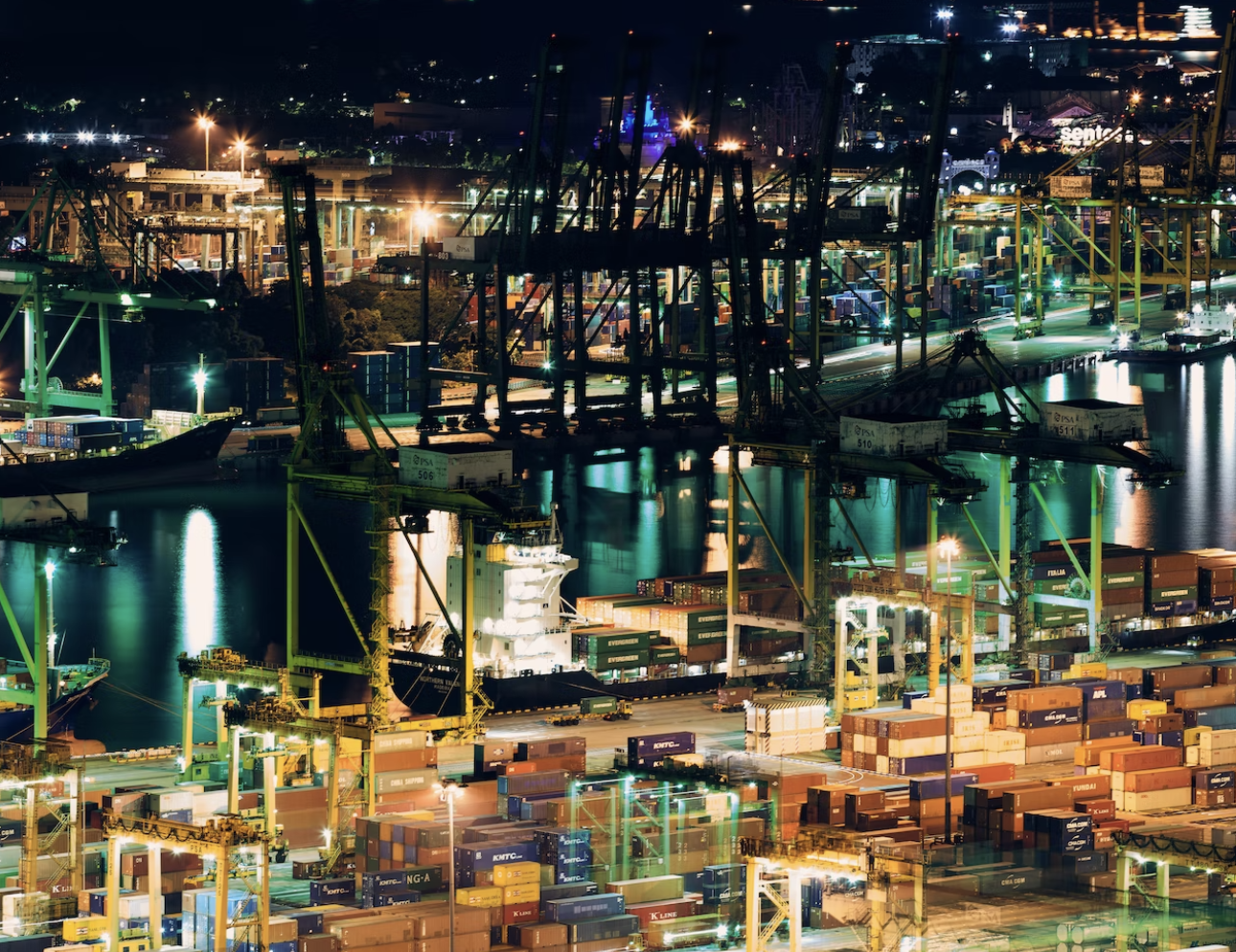Dispatch from the Climate-Trade Nexus

Introduction
This blog has been reposted from Illuminem, where it was originally published on November 22nd 2022.
As world leaders descended on Sharm El-Sheikh in Egypt for the 27th United Nations Climate Change Conference of the Parties, the low prospect of meeting the goals of the Paris Agreement cast a gloomy outlook, as the world is all but certain to overshoot the aspirational pledge of limiting the global average temperature increase to 1.5°C. In light of our collective failure to curb global greenhouse gas emissions, world leaders need to place much greater attention on climate adaption in order to prepare the global economy and wider society for the consequences of climate change that can no longer be avoided. It is therefore quite fitting that COP27 has been termed “the Implementation COP” with much of the focus on delivering real progress on finance, adaptation and loss and damage.
To date, however, climate adaptation has received only a fraction of the policy attention and finance that has been directed to climate mitigation efforts. A recentstudyfrom the Climate Policy Institute revealed that climate mitigation accounted for more than 90% of all climate finance in 2019–20, with the public sector providing the lion’s share of finance for climate adaptation. One of the main challenges is that climate adaptation has traditionally been perceived as a “local” issue and only of serious concern for developing countries, most vulnerable to the direct impacts of climate change. This false perception ignores how complex and systemic the consequences of climate change will be in a globalised world, and thus underestimates the importance of approaching adaptation on a global level. In fact, governments and businesses around the world are already being affected by the impacts of climate change that originate beyond national borders. Such climate risks have been termed “transboundary climate risks”.
When crises become the norm rather than exception
The last few years have been a rude awakening for governments and businesses across the world to the cascading effects of shocks. Stuck in fire-fighting mode in response to the disastrous and compounding effects of the Covid-19 pandemic, Russia’s war in Ukraine, and a plethora of related and interacting global crises, how governments and businesses can create resilience, when crises are the norm rather than the exception, has become the greatest challenge of our time.
The economic toll from these shocks and disruptions have been further exacerbated by sustained periods of drought across Europe, the United States, Africa, and Asia this summer, which have inflicted an enormous cost to people’s lives and livelihoods across the globe. In Europe, a “one-in-a-500-year” drought led to water shortages and declines in crop-yields that have had a significant impact on the production of maize, sunflower and soybeans (among other crops). Such impacts reflect a deep-rooted vulnerability in our global food system. Higher temperatures, changing rainfall patterns and more frequent and extreme weather events may have already reduced global agricultural productivity by 21% since 1961 (and between 26-40% in more warmer regions of the world) according to the World Bank (2022).
In a warming world, such disruptions are only set to increase and intensify. And our vulnerability to transboundary climate risk is not limited to agricultural commodities. The drought-induced water shortage in Taiwan in 2011 has raised alarm among policy makers and industry leaders over the near- and long-term implications of climate change for the global supply of computer chips, as the water-intensive semiconductor industry in the country accounts for around 92% of the global market for advanced semiconductors. Against this backdrop, many businesses have become cognisant that they will not only need to anticipate but pre-empt “the next crisis”.
Implications for international trade and supply chains
Today’s global economy is particularly exposed to transboundary climate risks due to the heavy reliance of countries and businesses on international value chains and supply chain networks which often stretch into countries and regions around the world that are particularly vulnerable to the impacts of climate change. The last three decades of market liberalisation have furthermore seen global supply chain networks become more centralised, consolidated, and integrated, in the pursuit of greater efficiency. While this streamlining of supply chain networks has delivered considerable benefits to businesses and consumers, the efficiency gains came at the cost of some of the redundancies that provided buffers against external shocks and disruptions in the past.
Who are the risk-owners?
Although governments around the world are becoming increasingly aware of the exposure of global supply chains networks to the impacts of climate change, the free-market and free-trade agenda that has shaped global trade policy developments in recent decades has embedded a “market-first” approach that tends to assign ownership of such risks to the market. Yet, the level of awareness and readiness among private sector actors to act on transboundary climate impacts remains uncertain and is likely to vary between larger multinational corporates and smaller and medium sized enterprises.
Indeed, the few assessments that have been conducted to date, indicate that SMEs indeed have limited awareness of the risks arising from a warming world and even fewer capabilities to respond to these risks. Even among larger corporates, there are likely to be serious knowledge gaps, blind spots, and insufficient institutional capabilities to manage transboundary climate risks. While some of larger corporates have begun to recalibrate priorities around their value chains and consider ways to “risk-proof” their supply chains (in some instances drawing lessons from other recent crises), others are falling short. Institutional silos between corporate structures responsible for procurement, sustainability, and risk analysis, can prevent an integrated approach to climate adaptation within corporations, let alone across the marketplace.
Just adaptation versus maladaptation
Fortunately, the tide has recently begun to turn, as the scope of political and public discourse on climate change is expanding to encompass not only the impact of our global economy on climate change, but the impact of climate change on our economy (and society at large) as well. This is evidenced by the recently launched “Race to Resilience” campaign at COP26 and the EU’s “Mission Adaptation” initiative (to name just two examples). However, climate adaptation needs to be approached on a wider systemic level, as adaptation interventions that deliver resilience for one group, country or organisation, could exacerbate the vulnerability of another. In fact, a recent study showed that many adaptations projects are making people more, rather than less, vulnerable to climate change, through so-called maladaptation. Maladaptation can take place when adaptation measures reinforce existing inequalities and thus vulnerabilities, creates new vulnerabilities, or redistributes existing vulnerabilities to other stakeholders.
For instance, export bans imposed by governments during the 2007-2008 global food crisis, the Covid-19 pandemic, and more recently during the heatwave in India this summer, could compound existing food insecurities for low-income households in countries around the world. At the same time, global supply chain networks often rely on inputs of crops, goods and services from countries and regions that are vulnerable to climate impacts, and responsive measures by governments and businesses – to divest or restrict market access – could prove maladaptive if they fail to account for the lives and livelihoods of such small-scale producers and traders. For these reasons, climate adaptation across international trade channels and supply chain networks must be considered within the context of broader social and development objectives and co-developed in consultation with affected communities.
Strengthening the public-private dialogue on climate change and trade
The role of trade policies in advancing climate adaptation has recently become a subject of increased policy attention. This is partly due to growing recognition of the importance of mainstreaming climate adaptation across different government departments and portfolios to ensure policy coherence, but also a result of important awareness-raising efforts by organisations such as the OECD, World Bank and WTO.
To date, much of the analysis of the climate-trade nexus has focused on the opportunities for trade policy frameworks and instruments to strengthen climate adaptation by facilitating the access of vulnerable countries to adaptation technologies and solutions to bolster their resilience to climate impacts, as well as access to critical supplies (e.g. food and medicine) in the context of disaster recovery. In contrast, much less work has been done to address the fragility of our global supply chains and safeguard food and other key commodity access from the ripple effects of transboundary climate risks.
In this context, the Stockholm Environment Institute and theAdaptation Without Borders partnership are spearheading the European Climate Risk and Trade Policy Programme in partnership with the EU Commission and a number of European governments and climate policy advisory bodies, to bridge knowledge gaps and establish a platform to enable strategic policy-exchange and partnerships. These public-private sector dialogues will also be harnessed to explore avenues for governments and businesses to work in tandem to identify and co-develop the relevant capabilities and tools that deliver enhanced and effective adaptation action at local, national, regional, and global scales. We welcome input from both policymakers and businesses from across Europe and beyond, who are interested in learning more about this programme.
Building a broad international coalition between governments, businesses and civil society where complementary expertise and tools can be leveraged, will be key to deliver the effective and just adaptation actions needed to meet our collective interests in a global economy, resilient to climate change.
Further Resources
The European Climate Risk and Trade Policy Programme
Adaptation without borders: A brief to participants in COP27

Comments
There is no contentYou must be logged in to reply.